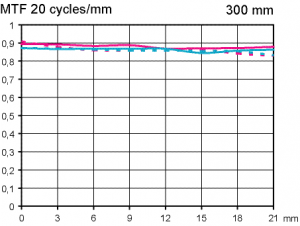Roger Cicala’s team at Lens Rentals runs MTF tests on more lenses than anyone else in the world, I suspect. They test at least ten copies of each lens model and analyze the variances, and concluded IIRC, Canon was the tightest. Their podcasts, sadly discontinued, are very entertaining and informative, by the way.
Sigma, and the lenses they are making today, bear little resemblance to the Sigma you know. They make some of the best-corrected lenses, period, and the pricing is well below the competition.
Sigma Art Lens MTFs
I found always that canon Red line had a very good end control. I never get a bad copy.
Nikon- even the cheap lenses was also always very good.
Sony with the new G-master lenses have also a real high standart - some of them are the most innovating modern lenses- what i hate is that they use plastic even at the best lenses.
Sigma start with the second generation of the Art lenses to be also a premium lens maker.The fist art generation was opticly not bad, but has AF problems.
This was not the case in the next generation.
When I would compare the newest Sigma Art lenses for Sony with G-master ( for example the new 1,2-50 mm) so Sigma make better build lenses, with same optical performance, for cheaper price. Maybe Sony AF is little faster.
So now you get also from Sigma very good products with very good end control.
What Sigma still dont have is creativity.
Thay are still more or less a copy company.
Zeiss, Nikon, Canon, Fuji, Sony develope new lenses, new designs, they are creative.
Sigma looks what they do and try to make the best copy of these lenses, zeiss develope Otus- Sigma made "poor -man otus copy" with AF ( Art line), Sony very compact G-master 1,2-50 mm gets now a very good copy with the new Sigma 1,2-50 mm...
Anyway Fuji makes also very solid lenses with very good end control. never see a bad copy here.
When we talk about hasselblad lenses so there are no real hasselblad lenses.
Hasselblad has to trust the lens maker that they make a good end control.
With Zeiss and fuji this was not a big problem, as they stay for highest quality. The new lens maker for hasselblad is not so known but very interesting indeed.
Lets see what new hasselblad lenses will come in the future...
Anyway, I needed a pair of Nikkor 105mm lenses for the project. I called our contact at Nikon. He sent a dozen lenses with the note: "Check them in your rig, pick the best two, return the rest."



